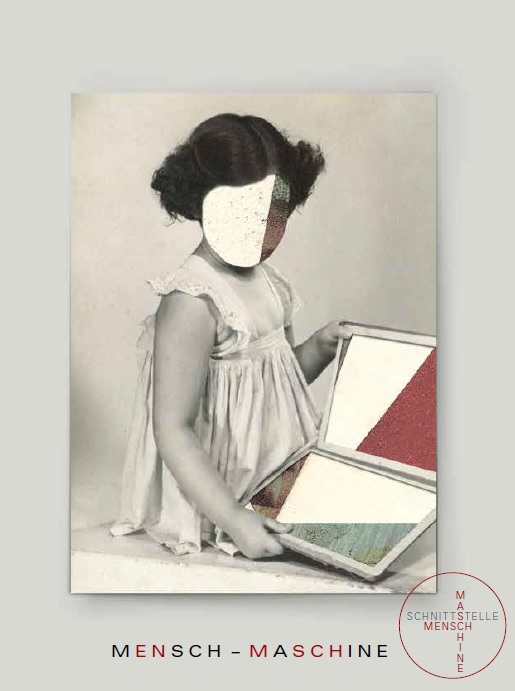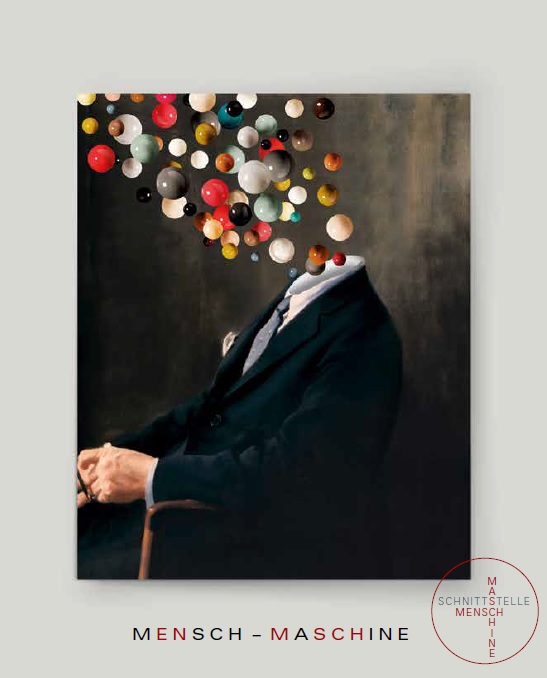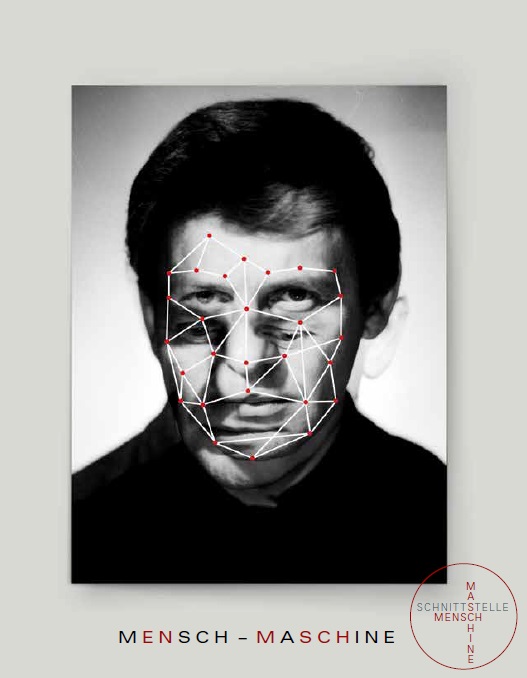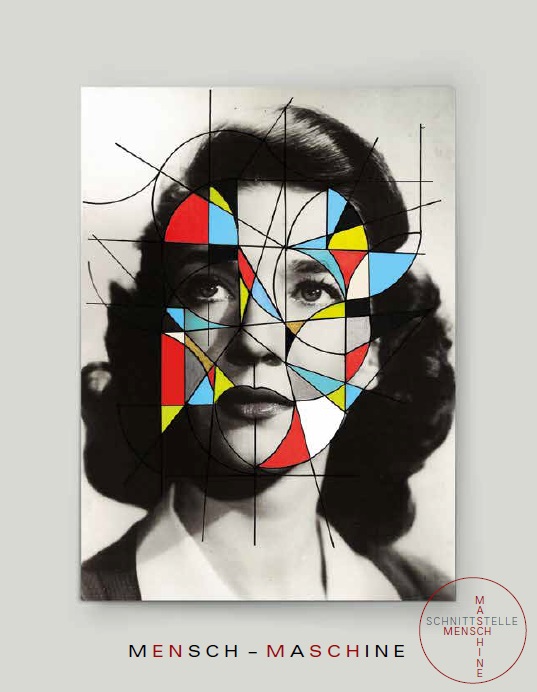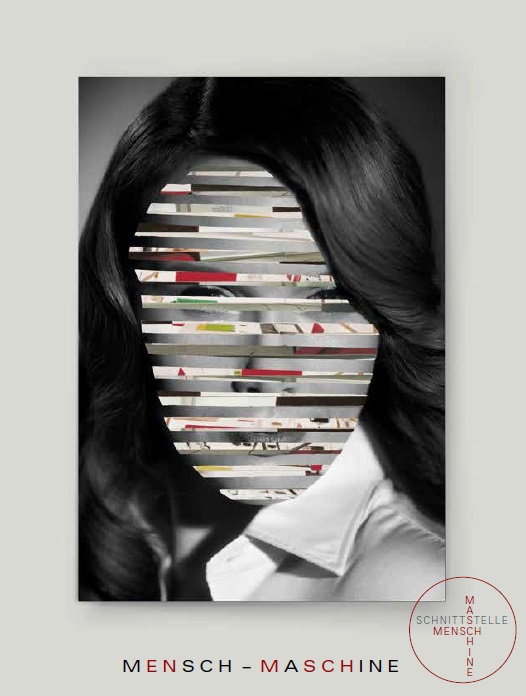UPGRADE 3.24
Please turn

An aging population, an increase in chronic diseases, rising healthcare costs: the healthcare sector is facing major challenges. Providing the best possible care for the population requires not only prudent strategic action and innovation, but also optimised processes that best integrate all stakeholders. The latest issue of upgrade, with its focus on "Health and Process", looks at how lean management is being applied in hospitals, how digital health data can lead to better decisions, the potential of the new model of community nursing, and the difference that good leadership can make in hospitals. The photo series "Monument and Recovery" shows impressive examples of hospital architecture.
UPGRADE 2.24
Ways of Art

Art comes in many forms. To define it would be to limit it. Like science, art seeks to explain, understand, and reflect on the world. Art's constant questioning of what we take to be truth and knowledge is sometimes uncomfortable, but it ensures societal progress. Artistic creation enriches our lives. Not only through beauty, but as a mirror of the world and ourselves. Issue 2-24, which focuses on "Art and Meaning," outlines the levels of meaning that art has today, the challenges that collections face, the financial side of the arts, especially in music, and the opportunities that AI offers the arts. Semiotic components of art are described in the picture series "Work and Meaning".
UPGRADE 1.24
Quite strong

Times may be challenging, but a good foundation protects democracy from many dangers: the rule of law. But even the law needs to evolve to keep pace with changes in society. Issue 1-24 of "upgrade", which focuses on "Law and society", is dedicated to such further developments in the law: from tackling the challenges of artificial intelligence and its effects in a meaningful way, to overcoming ecological challenges, for example through sustainable tax law and responding to changes in work and its organization, to changes in family law and necessary reforms to the EU legal system. The series of images entitled "... a few principles" provides informative references to legal principles.
UPGRADE 3/4.23
Getting Ahead

Despite the many unanswered questions of our time, one conviction is unquestioned: Education will play an eminently important role in the coming decades. The amendment of the Universities Act of 2002, which was passed in 2021, reorganized academic continuing education in Austria. The comprehensive reform package makes a significant contribution to the innovation and competitiveness of the higher education system, among other things through new standardized framework conditions, more options and increased permeability between regular and continuing education studies. The current issue, which focuses on "Continuing Education and the Future", is dedicated to the new opportunities: those of the continuing education reform, technology and related aspects, from more flexible curricula to new educational formats. It also looks at developments in academic continuing education in Europe and around the world. The photo series "getting ahead" illustrates how far one can get through continuing education by portraying outstanding personalities from recent history.
UPGRADE 2.23
Keep moving

Generally, it is expected that medicine has the task to cure people. Yet, the topic of prevention should be given greater attention, particularly when it comes to musculoskeletal diseases, where the numbers are growing due to the aging of the population and the increasing lack of exercise. Therefore, the current issue featuring "Exercise and Health" takes a special look at advances in orthopedics, highlighting the role played by regenerative medical therapies and the treatment options available. In addition, issue 2-23 shows how different age groups suffer from a lack of exercise, how easily this can be prevented with just a little exercise, and how artificial intelligence is supporting research and clinical practice. The "in motion" picture gallery covers a journey through the cultural history of movement.
UPGRADE 1.23
Does It Make Sense?

The speed at which artificial intelligence (AI) is developing is almost neck breaking. Apps that create images, videos, music, entire web stores or personalized chatbots in a matter of seconds pop up almost on a weekly basis.
This makes the fact that large areas of digitization largely depend on physical components such as sensors seem almost anachronistic. Thanks to their connection with AI, they not only augment the human senses in this context, but also help, for example, to increase safety in traffic, make production more efficient, or collect data to protect the environment and the climate. Therefore, the 1-23 upgrade issue focuses on sensor technology, its applications and the contributions the Department for Integrated Sensor Technology has made to its further development. The picture gallery "(No) sense of humor" illustrates additional perspectives in this context.
UPGRADE 4.22
Focus on Control & System - a coincidence or not?

Shelves overflowingly stacked with goods can already leave the impression of the world’s complexity. The "Paradox of Choice" sometimes lies in the detail: the phenomenon that copiousness of possibilities not only leads to making bad decisions, having difficulties in steering and planning life, but also elicits a feeling of unhappiness. Here, the questions arise how to deal with the challenges, all intertwined and interlinked, waiting for us in the present time. To navigate complex systems and subsequently decide effectively, for instance concerning world food supplies, an understanding of reciprocal dependencies is necessary: knowledge over the entailed outcome of this or that solution. Upgrade current’s issue covers a wide range of issues from world food supplies to searching for sustainability, and leadership in digital organizations – all representing complex systems we want to understand, need to assess, and make decisions within. The picture gallery "random" depicts the fact that chance can take on a thoroughly planned function in complex systems.
UPGRADE 3.22
When in doubt, for doubt
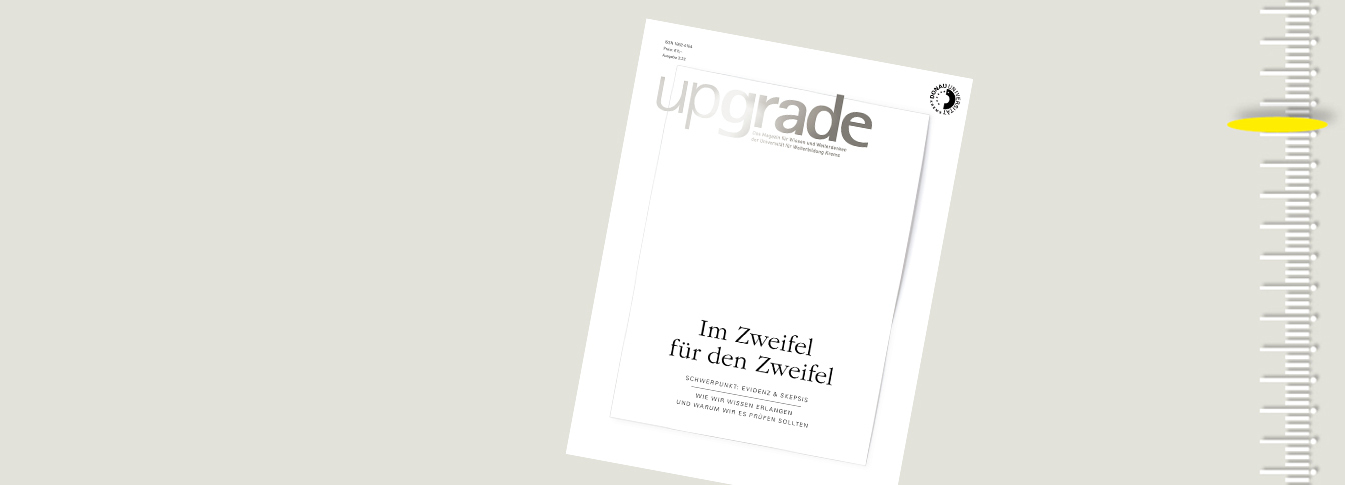
Day after day, we are bombarded by an abundance of information and assertions, and are confronted in making decisions. Yet, on exactly which facts are they grounded? Is there any scientific evidence to back them up? Searching for evidence is closely linked to the development of science and society. As the methods to generate knowledge have become more reliable, medicine, for example, has become more effective, business more decisive, and politics more responsive. The current issue of "upgrade" focuses on what makes findings verifiable, how concretely, for example, the topics of health and medicine are based on evidence, and why it is important to base our knowledge on a foundation of verifiable, tested, and comprehensible methods. 10 examples of false statements and only partially correct statements taken from the fields of politics, business and health are shown in the image gallery "Im Zweifel für den Zweifel" ("When in doubt, for doubt"), which is also the issue's introductory title. It shows: Whoever might not be sure should remain doubting.
Upgrade 2.22
upgrade 2.22 - Old Keeps New
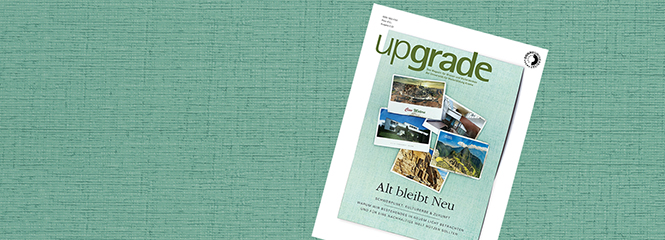
Cultural heritage: A term that in many people's minds is closer to ornamentation adorning old buildings than it is to innovation and the future. A pattern of thoughts hidden in our time often values the new as the better whereas the old is often classified as mediocre. But science shows: Cultural heritage holds a wealth of knowledge that we can harness in innovative ways to tackle societal challenges such as climate change. Cultural heritage is a comprehensive pool of knowledge helping us to better shape the future and to innovate. "upgrade" highlights the latest research findings and looks, for example, at how traditional building methods can provide cool spaces with minimal energy use. Marking the 50th anniversary of the World Heritage Convention, the UNESCO World Heritage sites and how to legally protect them are in the spotlight, as well as the protection of cultural assets against climate change-induced weather capriciousness in these times, or the future of urban development and tourism in the cultural heritage sector. "Views on World Heritage", the image gallery, takes a tongue-in-cheek look at the way World Heritage sites are treated in Austria.
Upgrade 1.22
upgrade 1.22 - Migration & Movement
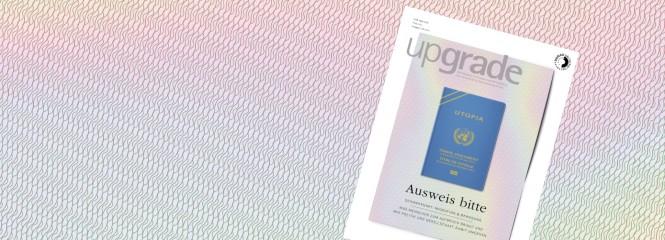
What is it that mobilizes people to set out for unsafe futures and faraway countries? People from Austria left for the so-called New World or other countries only a few generations ago in search of a better life – willingly or forced. Migration, as the change of one’s center of life, is characteristic for the whole history of mankind. Since the beginning of time, it has been the task of society and politics to deal with it in a way that creates value. With its focus on "Migration and Movement", upgrade 1-22 covers the complex of topics out of different perspectives: those of European politics, those of integration in urban and rural areas, those of returnees or those of the economy and science on the challenges of migration as well as on the relevance given to the widely recognized search for workers. "Passierscheine", the image gallery, illustrates here how important travel documents are. They determine the scope of our movement, are coveted identity cards for those seeking protection, but at the same time they are also a tool of power and protest as well as symbols carrying a high degree of expression.
Upgrade 3.21
upgrade 3.21 - Culture & Time
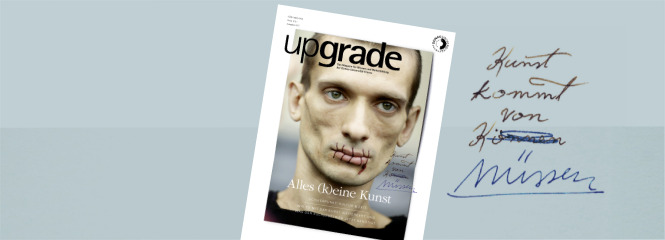
Where does art come from, what drives artists to create? Art enriches its own spheres and the world of science with the ability to reflect upon reality, which is multi-layered and at times elusive. What science only attempts in parts with straightforwardness, has always been essential for art: to engage with societal, to admonish, to comment, and especially to change. In its focus on "Culture and Time," upgrade examines how the various fields of art are assertive during the pandemic, what developments are taking place in the cultural sector, what new self-image museums are taking into the future, what collection strategies they are pursuing, what determines musical life, and how young up-and-coming artists can hold their own. The picture gallery revolves around the question of where art comes from: Is art based on skill or - loosely quoting the Austrian composer Arnold Schönberg – or is it the urge of having to?
Upgrade 2.21
upgrade 2.21 - Law and Change
.2021-08-05-15-37-08.jpg)
Where societies are built, there is law. Regarded as probably the most important achievement in the history of civilization, it regulates our coexistence, ensures freedom, keeps arbitrariness at bay, and forms the basis for progress. Law provides us with stability. But the legal system is also subject to change. Today's processes entail changes and present a wide range of challenges. Thinking as an example of the possibilities new technologies offer - buzzword: algorithms - requires a careful balancing of opportunities and risks. The ecological question also has an impact on the legal system, as do media discourses and political conflicts. upgrade's current issue deals with "Law and Change" and addresses these current challenges reaching from law, to digitalization up to climate protection. The EU Charter of Fundamental Rights forms the foundation which is essential to our law in Europe, yet it is little known. The upgrade picture gallery gives it the space it deserves.
Upgrade 1.21
upgrade 1.21 - Complexity and Structure
.2021-04-14-18-08-09.jpg)
Many people talk about the increasing complexity the world face and actually often refer to the complicated state of the world. Complexity is thoroughly positive, if it seen as what it is: A higher order of self-organization both of nature and our society. Society itself has admittedly become very complex. This high degree of complexity of our society creates uncertainty and makes decisions more difficult. One way of dealing with this is to learn to endure uncertainty and to become actively involved in change processes instead of remaining passive. No matter how complex the challenges of the present are: The question of how we want to shape the future in a self-determined way should be at the center of action. With this science can help. In its current issue, upgrade illuminates these many facets of complexity with a focus on "Complexity and Structure." The picture gallery shows how quickly systems of self-organization can topple over.
upgrade 3./4.20
upgrade 3./4.20 - Reflection & Perspective

Since the foundation of Danube University Krems 25 years ago, university-based continuing education has achieved a high level of quality. It was then in 1995 when the foundation was regarded innovative, and to this day Danube University Krems has set numerous accents in academic continuing education as well as in the Austrian science and university system. On the occasion of the anniversary the special issue "Reflection & Perspective" of the university magazine upgrade is published to take a closer look at Danube University Krems being the only public university for continuing education within the German-speaking area. At the same time, the issue sheds light on current questions and the potential academic continuing education has to offer.
Upgrade 2.20
upgrade 2.20 - Humans and Machine

Are we on the verge of the great digital leap? Working, and especially learning and teaching, has shifted to the Internet as a result of the corona pandemic. Issue 2-20 of the university magazine "upgrade", which focuses on "Education & Technology", outlines how digital education is now moving forward. The picture series points up the "man-machine" interface and the milestones in the educational technology development describing learning theories reaching far back into the early 20th century (illustrations: Matthieu Bourel).
Humans - Machine
upgrade 1.20
upgrade 1.20 - Life elixir blood

Blood is at the same time both: a life elixir and a carrier of diseases. The current issue of upgrade is dedicated to this body fluid from a biomedical perspective, in the context of which, for example, improved therapies against one of the most frequent causes of death worldwide are being researched: Sepsis. This condition, which is a derailed inflammatory reaction of the body, requires precise and rapid diagnosis and targeted therapeutic methods. The science journalist Peter Illetschko contributes an article on COVID-19, and the picture gallery "Blood - the Elixir of Life" depicts various cultural meanings and scientific facts this important bodily fluid delivers.
upgrade 4.19
upgrade 4.19 - Nature under pressure

The pressure burdening planet Earth and therefore our civilization is obvious: unpredictable environmental occurrences, the global loss of fertile soil, the scarcity of drinking water, the enormous challenges food production faces. In all of this water plays a special role. It is this medium that makes all the effects climate change imposes on planet earth noticeable. The shortage of rain or floods, the rise in sea levels, and the loss of drinking water are just some of the ways. The picture gallery "The Impact of Water" in upgrade issue 4.19 comprises images by award-winning nature photographer Rudi Sebastian. Here, the crucial role water has for civilization and nature is impressively depicted.
upgrade 3.19
upgrade 3.19 - Staying healthy
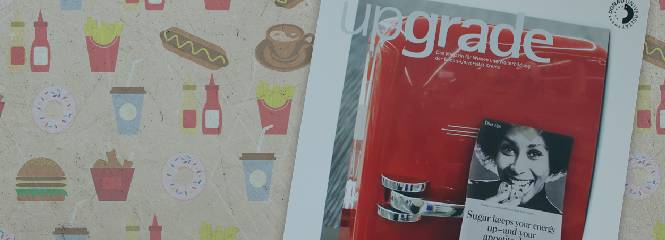
More calories, more salt, more sugar: with dietary and lifestyle changes around the world, diseases such as stroke, vascular disease and dementia are spreading rapidly. In China, Brazil or South Korea the number one cause of death now is stroke. According to the World Health Organization (WHO) the life expectancy of men in the United States has fallen by three years. Obesity is one of the causes. Upgrade 3.19 focuses on how medicine and each individual can prevent obesity. The picture gallery "Advertising vs. Health" demonstrates the discrepancy between the promises advertising makes and the medical guidelines a healthy life requires.
upgrade 2.19
upgrade 2.19 - Measured world

The earth as a disk. To this day, people continue to follow this belief and launch rockets to prove it - opposed to all scientific evidence on the contrary. The overall skepticism towards science is growing, its findings are doubted. What are the reasons for this? Does evidence counter misbelief, pseudoscience, and denial of facts? "In science we trust", the magazine calls for upgrades and sheds light on the widespread phenomenon of scientific skepticism. Additionally: evidence-based medicine in action against medical myths, management for preserving the knowledge of organizations, detecting statistical tricks, and evidence-based decision making. The picture gallery "Science vs. No Science" shows the extent to which misconceptions persist today.
upgrade 4.18/1.19
upgrade 4.18/1.19 - In science we trust
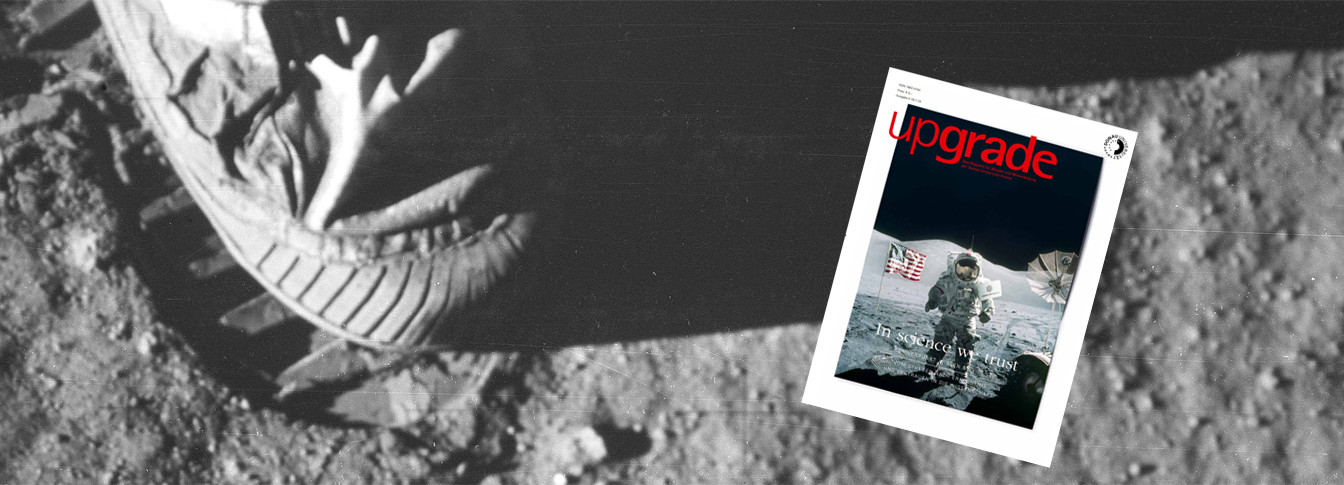
The earth as a disk. To this day, people continue to follow this belief and launch rockets to prove it - opposed to all scientific evidence on the contrary. The overall skepticism towards science is growing, its findings are doubted. What are the reasons for this? Does evidence counter misbelief, pseudoscience, and denial of facts? "In science we trust", the magazine calls for upgrades and sheds light on the widespread phenomenon of scientific skepticism. Additionally: evidence-based medicine in action against medical myths, management for preserving the knowledge of organizations, detecting statistical tricks, and evidence-based decision making. The picture gallery "Science vs. No Science" shows the extent to which misconceptions persist today.
upgrade 3.18
upgrade 3.18 - Know thyself
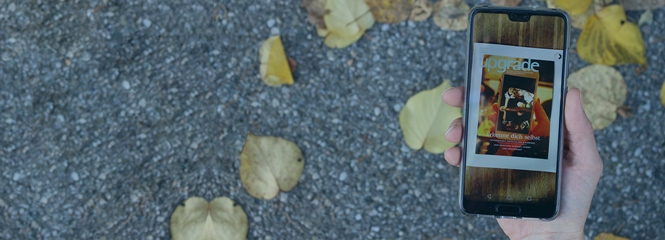
When it comes to career development, one thing is particularly important: Know yourself! Where are your strengths, where are your goals? What hinders us, what brings us forward? upgrade dedicates its current issue to a topic that concerns everyone. It illuminates the subjective level as well as careers from a structural point of view. In focus: dealing with fear in professional life, the sociological side of advancement, the topic of competence development of employees versus crowd-working and, last but not least, the invisible barriers to careers for women and immigrants. The fact that careers rarely run in a linear fashion is shown in the "Career Leaps" photo gallery.
upgrade 2.18
upgrade 2.18 - What will remain

Early day houses are replaced by new constructions, world heritage sites like Palmyra are destroyed by war and terror attacks, cultural assets are jeopardized as in Italy in 2016: what will remain, what shall remain from our cultural heritage, whether built, as collection or in digital form? Upgrade’s current edition sheds light on topics relevant for policy, tourism and identity manifestation depicting 9 examples by means of cultural heritage as a zone of conflict from the Buddha statues in Bamiyan, Afghanistan to the wrangle about the world heritage site of Vienna’s center, subject heading: setback of the Canaletto view.

